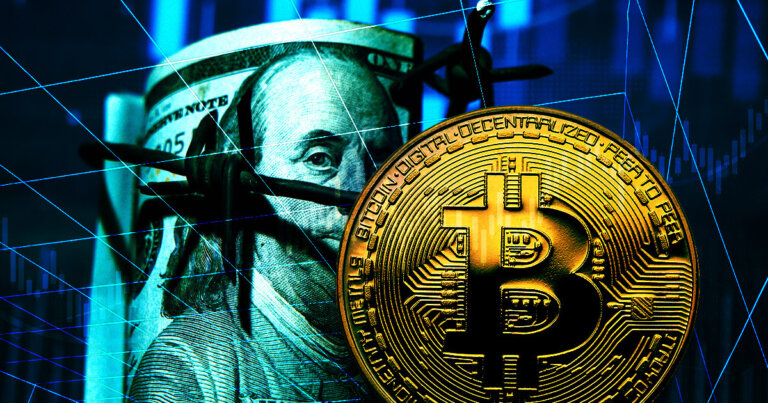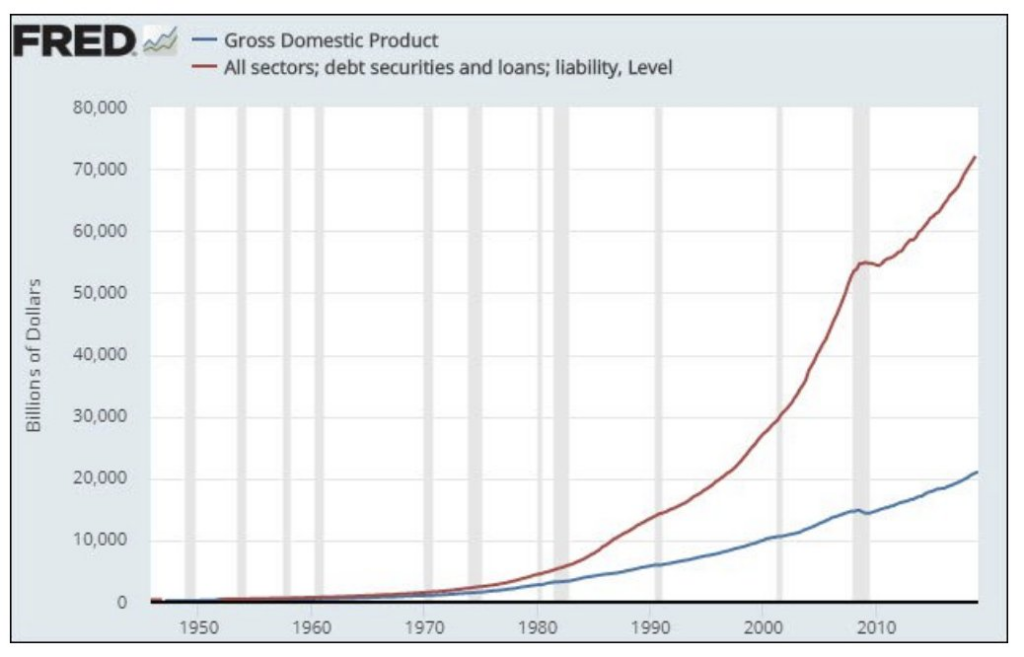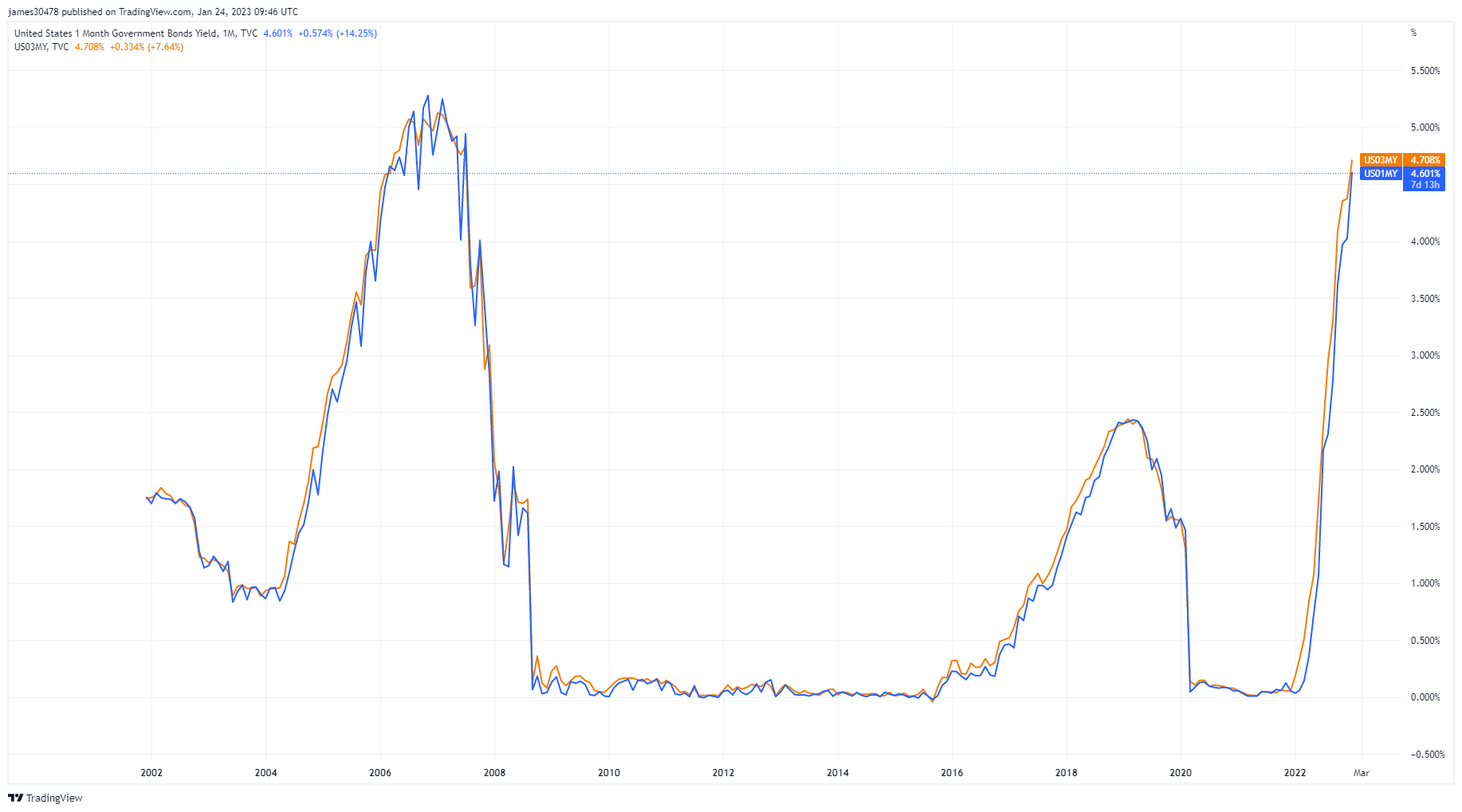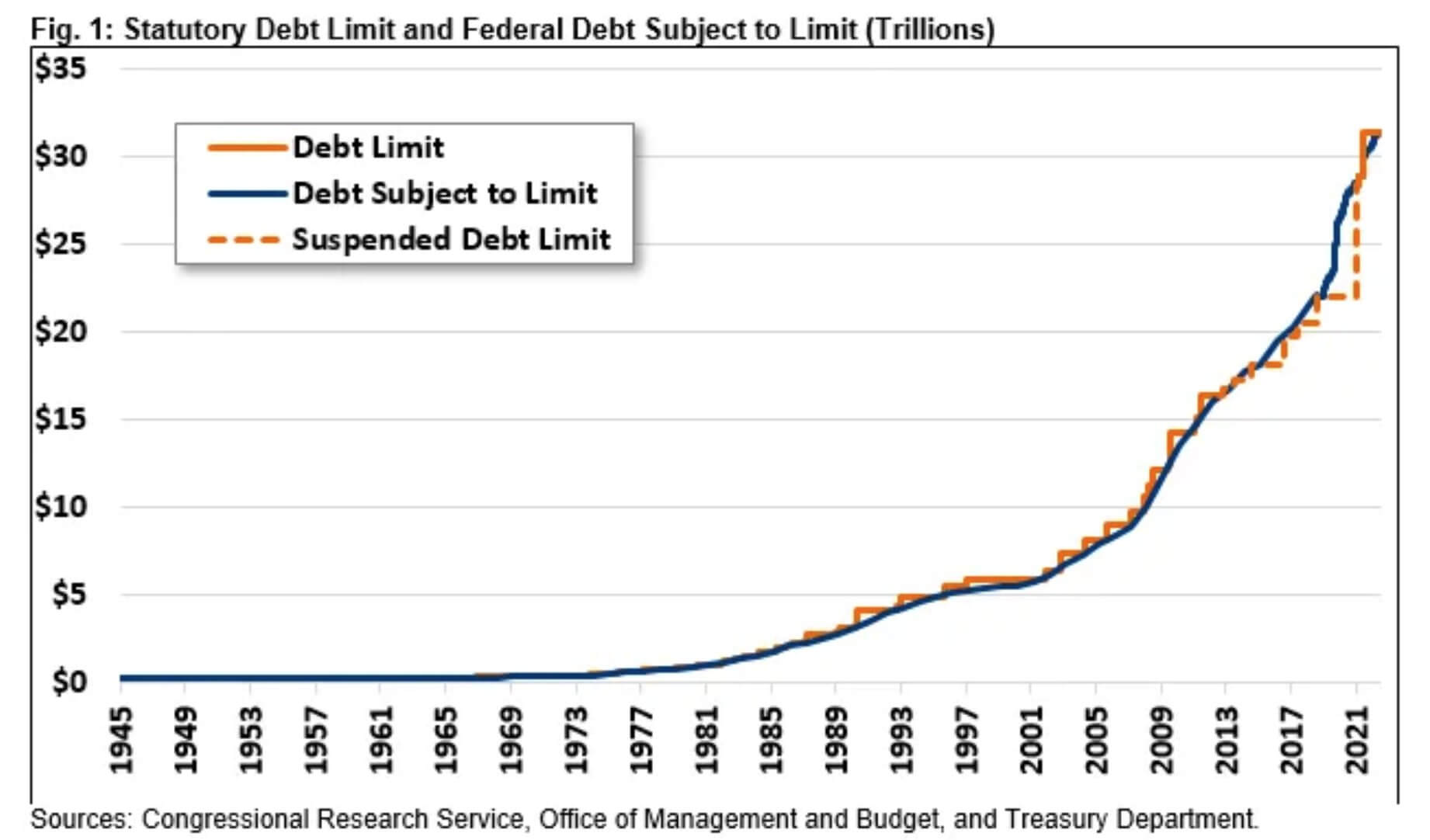 Op-ed: Bitcoin could be the answer to the US’ spiraling debt
Op-ed: Bitcoin could be the answer to the US’ spiraling debt Op-ed: Bitcoin could be the answer to the US’ spiraling debt
The U.S. debt ceiling is at its limit once more, sparking debate on incorporating Bitcoin into U.S. monetary policy.

Cover art/illustration via CryptoSlate. Image includes combined content which may include AI-generated content.
The U.S. debt ceiling reached its $31.4 trillion limit on Jan. 19, prompting calls for radical action, even removing the ceiling altogether.
Bitcoin offers an alternative to the fiat system, which is destined to fail as a result of the inherent need to expand the money supply through money printing.
Although U.S. government BTC adoption will never likely happen, there exist several innovative solutions involving the use of Bitcoin to tackle runaway debt.
U.S. debt ceiling
The U.S. debt ceiling refers to a legislative cap on the national debt incurred by the U.S. Treasury. In other words, it limits the money the U.S. can borrow to service its bills.
The chart below shows U.S. government liabilities far exceed Gross Domestic Product (GDP,) forcing the U.S. to raise additional funding through the sale of Treasury Bonds. However, it should be noted that the Second Liberty Bond Act (1917) prevents the sale of Treasury Bonds after hitting the debt ceiling limit.

Raising the debt ceiling requires bipartisan approval. Recent instances of approaching the debt limit in the past have been met with political posturing from both sides of the divide.
On Jan. 19, the $31.4 trillion ceiling was hit, promoting Treasury Secretary Janet Yellen to enact “extraordinary measures” by calling on Congress to raise the limit or suspend it temporarily to avoid a government shutdown.
In the meantime, to keep the Treasury ticking over, Yellen announced she intends to issue around $335 billion in short-term bills to maintain government operations.

Failure to reach a timely agreement may mean economic catastrophe in delays to Social Security payments, unpaid military personnel, and severely impacting families who rely on benefits – not forgetting the potential impact on financial markets fearing a government default.
Bitcoin performance
The table below documents the dates the U.S. debt ceiling was reached during Bitcoin’s history and the coin’s intraday performance on that day.
It shows a mixed result regarding whether debt ceiling crises trigger a positive or negative price performance. Of the 13 dates, seven yielded positive intraday returns, with Oct. 17, 2013, giving the best performance at 3.12% gains.
However, none of these events occurred under extreme economic conditions, including a high-interest rate and inflationary environment.

The U.S. is facing a dilemma in that the only feasible solution is to extend the ceiling limit, as it has done in the past. As illustrated below, extensions have only led to more reliance on debt, compounding the problem of never being able to pay it down.

Intraday performance aside, Bitcoin advocates argue that BTC is a possible solution to spiraling debt, as it is not beholden to monetary expansion or political and state control.
For example, on Oct. 7, 2021, as the Senate approved a $480 billion increase to the ceiling, Senator Cynthia Lummis said the dangers of irresponsible debt management have consequences, including devaluation.
“In the event that contingency occurs, I want to make sure that non-fiat currencies, not issued by governments, not beholden to political elections can grow, allow people to save, and be there in the event that we fail at what we know we have to do.”
Taking things a step further
In terms of utilizing Bitcoin in innovative ways to tackle the debt problem, several solutions exist, including issuing bonds denominated in BTC instead of the dollar, enabling the government to raise funding without adding to the debt ceiling.
Similarly, incorporating BTC into monetary policy in a hybrid model would offset the effects of loss of purchasing power through expansion.
Fiat money is doomed to inflation
The fundamental problem with fiat money is it relies on perpetual growth, meaning the system must keep printing to keep the Ponzi alive. Currency debasement or a reduction in the currency’s spending power occurs when the money supply increases without a corresponding increase in economic output.
U.S. M3 money, which refers to the money in circulation plus checkable bank deposits in banks, savings deposits (less than $100,000), money market mutual funds, and time deposits in banks, has been on the rise since records began.
The chart below shows a substantial uptick in the M3 money supply since 2001. The covid crisis prompted a near-vertical increase, which has since tapered off, having peaked at $21.7 trillion in February 2022. 40% of the dollars in existence were created during this period.
The recent flip to quantitative tightening has since led to a downtrend in the M3 money supply. But, inevitably, the Fed will eventually be forced the turn the printing presses back on to stimulate economic activity.

Gross Domestic Product (GDP) data from the St. Louis Fed showed a 13% increase in economic output between Q1 2020 and Q1 2022 – far below the expansion in the M3 money supply.
MicroStrategy Chair Michael Saylor called Bitcoin the scarcest asset on planet Earth. His reasoning boils down to the token’s 21 million fixed supply, meaning it cannot be debased, unlike the dollar.
In theory, as the M3 money supply grows, the price of BTC in dollar terms will increase as dollar debasement kicks in, i.e., more dollars are needed to buy the same BTC.
However, in reality, lawmakers generally are wary of cryptocurrencies. For example, Yellen has publically denounced them on multiple occasions, most recently in a statement calling for “more effective oversight” in the wake of the FTX collapse.
As such, the U.S. government’s adoption of BTC is unlikely to happen. But, staying the course and amassing more debt and more loss of purchasing power can only lead to further erosion of dollar hegemony.






























































































